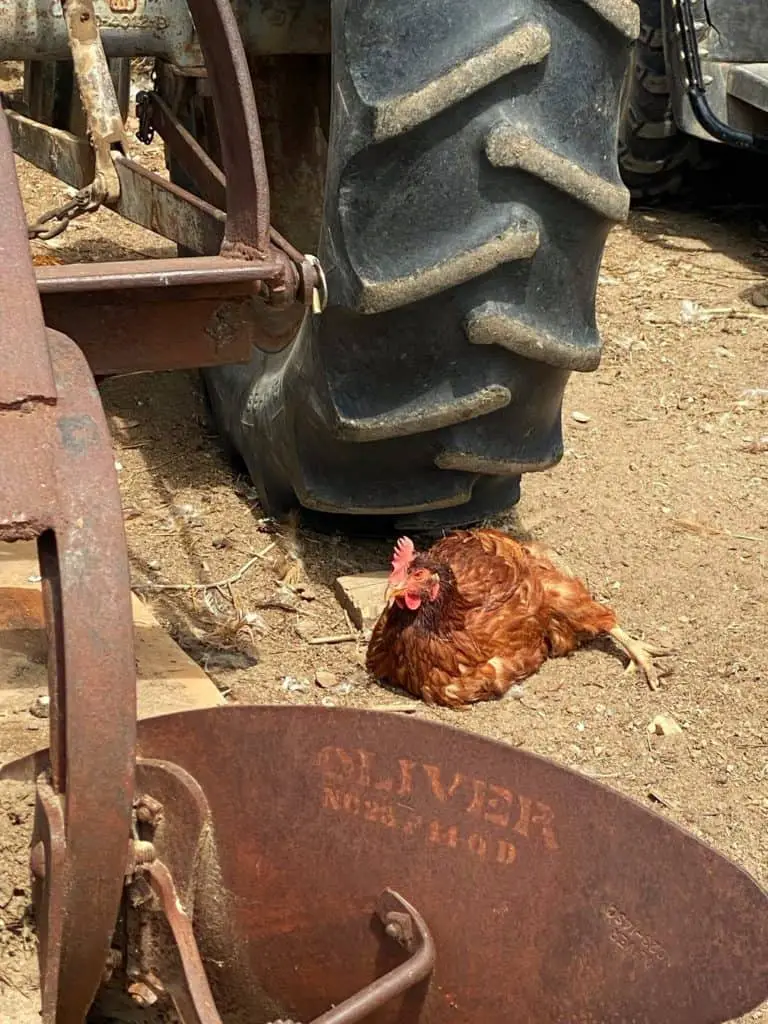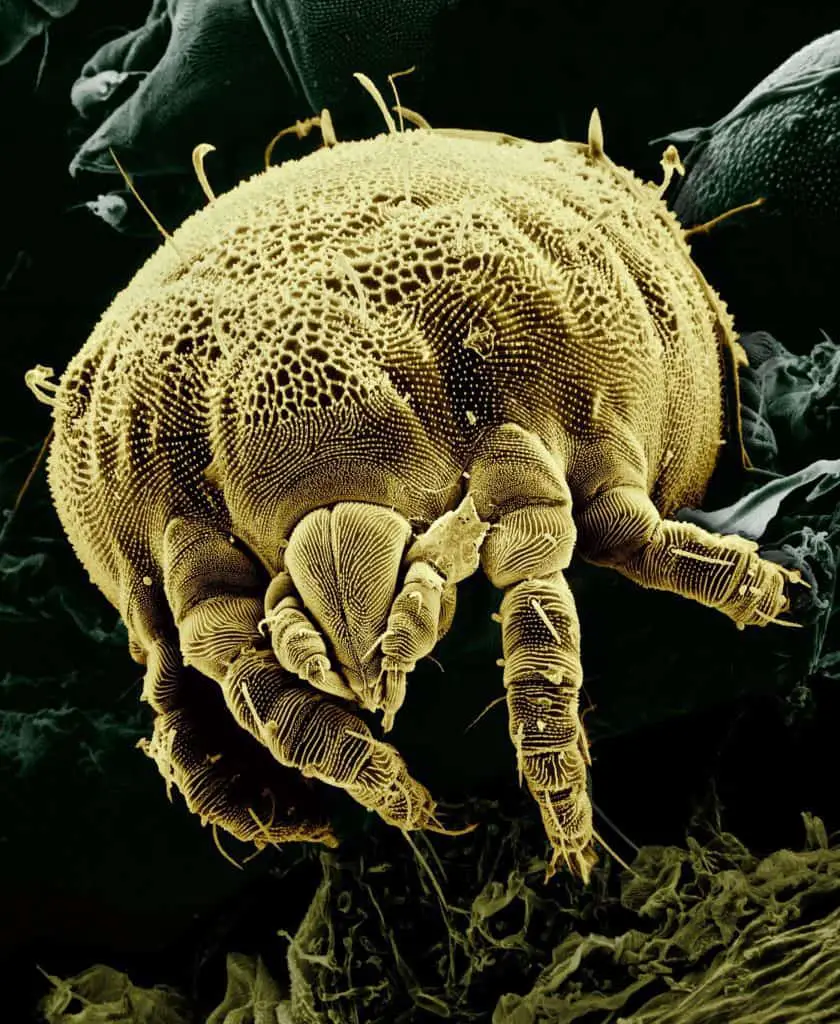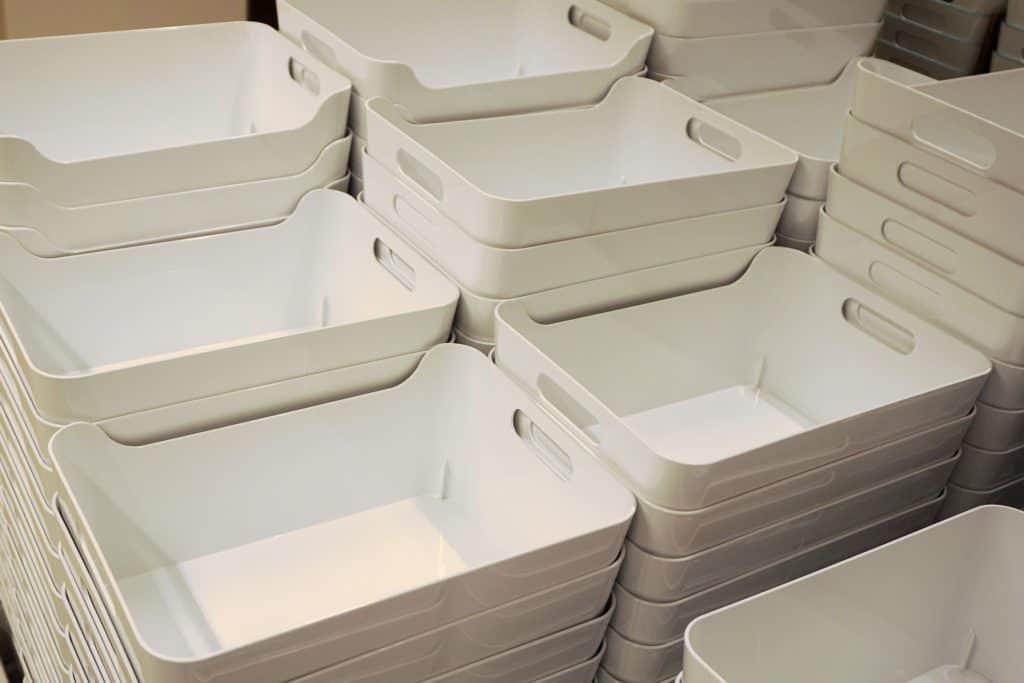All chickens take dust baths, and for good reason. Dust baths are an essential and hygenic part of a chicken’s daily, or weekly (if possible) ritual. They do this to kill mites and lice, do lessen oil build up, and because to them, it simply feels good. Here, we explain in detail why each of these purposes is essential for good chicken health, and how you can provide a good environment for your chickens to “bathe” all year long regardless of the climate in which you live.

I’ll never forget the first time I saw one our chickens taking a dust bath. It looked like she was an ice cube melting in the sun. I immediately thought we had experienced a predator attack, or that she had killed over dead, laying on her side, covered in dirt. As I ran over to her however, I noticed that she was busily extending to reach more dust to throw over herself, much like I have seen sparrows do with birdbaths.
Feather maintenance is important. And a dust bath is as good as it gets if your a chicken. Our chickens have very specific places in the yard where they choose to bathe. Thy typically dig or scratch a small ditch, or oval shape in a place that has soft, finer, dirt, or ash, (loose material) and burrow and thrash to toss dirt over their entire body. They will continue this motion until their feathers are coated with dust, and then even shake and shimmy until the dirt and dust settles on their skin. After some time of twisting and dusting, the chicken will stand, and shake herself off.
1. To Kill Lice and Mites
The most important purpose for dust bathing is rather hygienic. Chickens and other fowl will use dust baths as a natural deterrent to parasites that can bring sickness and unpleasantness. Even the cleanest backyard chicken coops can suffer from lice or mite infestations from time to time. Mites and lice are very small (even microscopic) flat insects that feed on the blood, feathers, skin, and scales of the bird and can result in loss of nutrient, anemia, poor egg production and even death. Lice are ectoparasites and can spend their entire lifetime on a host chicken, or other mammal. The louse’s eggs (nits) attach to feathers, and cannot transfer to humans, as they are host specific. Mites on the other hand, are arachnids, and generally have a rounded body, and sucks a chicken’s blood during the night, and can effect sleep. Mites therefore commonly hang out in the nesting boxes, or hide during the day.

Chickens are notorious self groomers, and do a good deal on their own to combat mites and lice, such as pecking with their beaks, taking regular dust baths, and even molting. Most of these processes will allow your chickens to control any mild infestations.
The purpose of the dust bath in this regard, is that when the dust covers the chickens skin, it clogs the breathing pores of any parasites that may be hiding, or who are using the chicken as a host. Many have recommended locating where your chickens like to dust bathe, and add a small mix of Diatomaceous Earth to the dirt. Diatomacious Earth is the sworn enemy of pests such as ticks, lice and mites, as its superfine particles get to the base of the bird’s feathers and kill the pests. You’ll want to be careful how much Diatomaceous Earth you use, however, and you can read more here.
2. To Absord Excess Oil and Moisture on the Chicken’s body
Another reason dust bathing is helpful and hygienic for your flock is that it helped your birds keep oil and other material from building up. Chickens have an uropygial gland, or oil gland at the base of their tail on their lower back that come in useful when preening. Birds distribute these oils throughout their feathers as they preen, but when oil production comes in excess, dust bathing is a good way to keep the excess oil at bay.

3. Its a Social Experience
Anyone who has raised backyard chickens will testify that their birds are extremely sensitive. They form bonds with each other, with their care taker, or even other family pets. After thunderstorms or the fireworks on the 4th of July, the stress my affect their egg production levels. Similarly, if one chicken dies, you will note that her “friends” will go through a mourning period of isolation and even broodiness.
Similarly, chickens use their bathing time as a good opportunity to gather. Often, we will find 5-6 chickens bathing in their little baths near one another, clucking and “melting”, as though they had official gossip they needed to get through. I’ve watched a group of 7-8 sit beneath our bull tree out back and dust bathe for hours at a time. They thoroughly seem to be enjoying the experience, and from what I know of chicken personalities, I think their time for dust bathing is important to their social structure and “pecking order”.

Make A Dust Bath for your Backyard Flock
Depending on your coop setup, you may find it necessary to provide a homemade dust bath for your chickens to use throughout the year. Because our flock is a free range flock, they have no problem finding various locations to bathe during the spring and summer. During the winter however, most of their favorite dust bath spots are covered with ice and snow. And though mite and lice populations typically slow or die down during colder months, your birds will still want to bathe whenever they have the opportunity.

You can use any container, or wood box that is 1.5-2 square feet in size. You will want the height to be 4-8 inches, to keep the dust/dirt contained, but no too high for the chickens to enter. It is very handy to use 6 inch plastic storage bins that can be purchased at any Wal Mart or hardware store. The most important aspect of a homemade dust bath will be what you fill it with. We use fine beach sand and ash to fill our winter dust baths. It is also recommended that you add 1-2 cups of Diatomaceous earth to help kill pests and parasites that may infest your birds. We do not use Diatomaceous earth for our birds, simply because we also have beehives nearby, and do not wish to cause any potential harm to the bees.
You will find that your chickens will line up to take turns in their winter dust baths, and it may even be helpful to place two or three baths to allow for more chickens to utilize them. We change our dirt out during the winter once per month just to freshen things up for the ladies, and to be sure to remove fecal matter than can gather within the bath boxes.

Having dust baths available for your birds is just one aspect of maintaining a happy and healthy coop. I have found that the more time and love I spend caring for our girls, the better they do at taking care for themselves and each other, producing eggs, and being genuinely happy.

